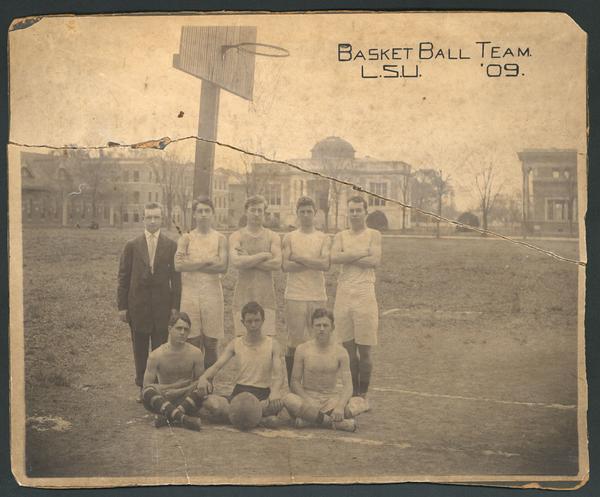This post is the first in a series on the effects of the “Spanish Flu” pandemic in 1918 and 1919. In light of the recent situation with COVID-19, SCARC archivists Anna Dvorak and Larry Landis explore how past epidemics and pandemics have impacted the Oregon State and Corvallis communities.
Over the past 250 years, Oregon and the Pacific Northwest have endured several epidemics and pandemics. These periodic bouts of malaria, yellow fever, smallpox and influenza have had profound effects, particularly on Native American communities.
Most akin to the current COVID-19 crisis was the 1918-1919 influenza. This worldwide pandemic took the lives of an estimated 50 million people globally; in Oregon more than 3,600 people perished from fall 1918 into spring 1919, and many suffered lasting health effects for years afterward. Oregon Agricultural College was not spared from the pandemic, though the college and the local community fared better than many communities.
One of OAC’s earliest and highest profile casualties of the 1918-19 pandemic was Dr. Wendell James Phillips, who was OAC’s first college physician and head of the Student Health Service. He died in late October 1918 while on leave from OAC serving as a military physician – one of two OAC faculty casualties of World War I. Dr. Phillips came to OAC in Fall 1916 to inaugurate the college’s health service.

Phillips was born on November 30, 1886 in Selinsgrove, Pennsylvania, north of Harrisburg. He earned his undergraduate degree at Louisiana State University in 1911, where he played football and basketball. Phillips received his medical degree from the Jefferson Medical College of the Thomas Jefferson University in Philadelphia in June 1915. He then served as a resident physician at Philadelphia’s St. Agnes Hospital. Phillips married Ruth Haas in August 1916, just prior to moving to Corvallis.
When Phillips arrived at OAC in early September 1916, he was charged with outfitting the new the Student Health Service, which consisted of a clinic in the men’s gymnasium. His work with establishing OAC’s health service was widely reported in Portland and other Oregon newspapers. The new health service quickly outgrew its original space and ultimately relocated to what is now the Hattie Redmond Women and Gender Center. Over the next eighteen month Phillips laid the groundwork for the robust health service that has served OSU for more than 100 years.

Phillips was highly regarded by faculty and students. He was a faculty member of the Sigma Alpha Epsilon fraternity. Phillips also served as the medical advisor for the college’s athletics teams and was a charter member of the college’s chapter of Sigma Delta Psi, a national athletic honorary fraternity. He undertook specialized training in the summer of 1917 to become an ear, nose and throat specialist. Within the local community, Phillips led a league of church-affiliated basketball teams during the winter of 1918. As the college physician, he prepared a bulletin on hygiene that included treatments for colds, poison oak, and other common illnesses suffered by college students.

In April 1918, Phillips took a leave of absence from OAC when he was ordered to report for military service in the U.S. Army as part of the war effort. On the eve of his departure from Corvallis, Phillips and another local physician who was also entering the Army were honored at a banquet at the Hotel Julian. Phillips entered the Army Medical Corps and was commissioned as a 1st Lieutenant and trained at the Army’s Medical School at Camp Lee, Virginia. He was awaiting orders to be sent to France when he contracted influenza, and passed away from the resulting pneumonia on October 13, 1918 at the camp’s base hospital, just a few weeks short of his 32nd birthday. He was interred in the Union Cemetery in his hometown of Selinsgrove on October 16.
Phillips was highly lauded after his death. His obituary in the Corvallis Gazette-Times described him as untiring, reporting that he had seen more than 4,000 patients between January and April 1918. The January 1919 OAC Alumnuscharacterized Phillips as “naturally full of energy,” one who “never seemed to tire,” and who was ”always ready to answer a call at any time of the night as well as the day.” The college’s 1918-20 biennial report section on the college in the world war noted Phillips’ passing:
As College Physician he touched the lives of all students, and by his sympathetic interest and untiring energy made his professional influence felt throughout the institution. Technically competent and personally accomplished, he inspired confidence and friendship among both faculty and students, all of whom were deeply grieved by his untimely death.
Phillips was honored as an Oregon State Gold Star member – those Oregon Staters who gave their life during WWI and to whom the Memorial Union is dedicated. When Oregon State’s new Student Health Service building (now Plageman Hall) opened in 1936, the State Board of Higher Education approved the placement of a bronze plaque in Phillips’ honor in the vestibule of the building. The plaque was provided by his widow, Ruth Phillips.
This post was contributed by Larry Landis, Director of Special Collections and Archives. Larry Landis is the director of OSU’s Special Collections and Archives Research Center, and has worked as an archivist at OSU since 1991. He is the author of A School for the People: A Photographic History of Oregon State University. Larry is retiring from OSU on July 1.
